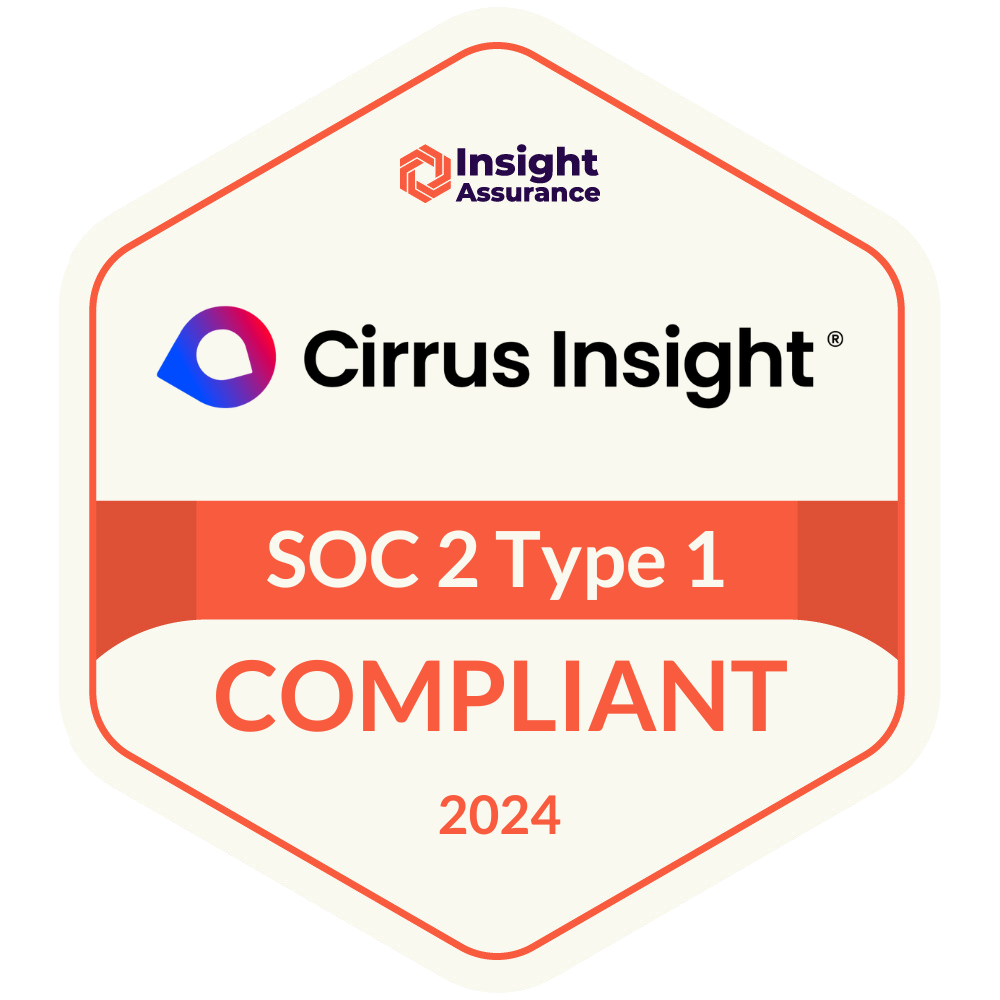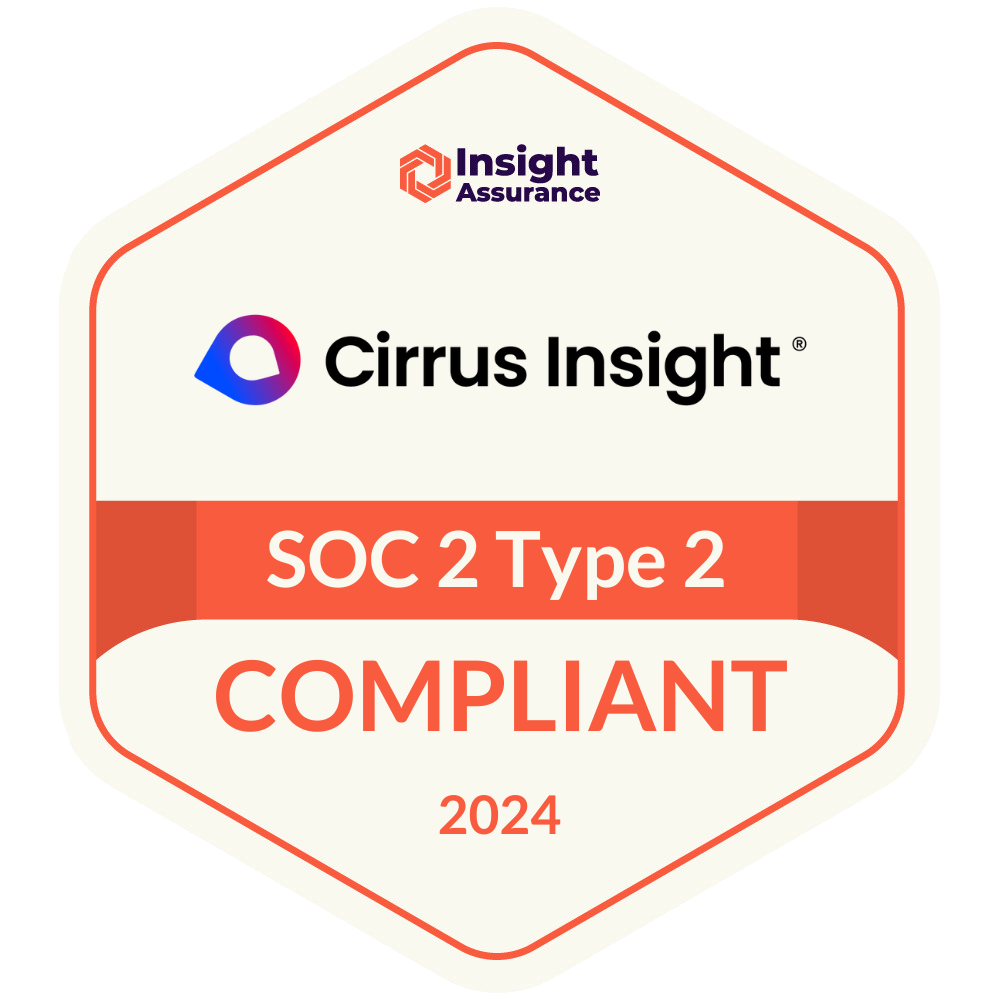- Solutions
-
Products
-
Resources
Sales Automation Tools | Cirrus Insight by Kristi Campbell View all Blog Posts >Get the App, Get the Sidebar, & Get Your Trial Going HereUnleash limitless growth opportunities by partnering with Cirrus Insight.
- Pricing
Filter By:
- All topics
- Sales Productivity
- Sales Intelligence
- Salesforce
- Sales Strategy
- Sales Prospecting
- Book More Meetings
- Best of
- Company News
- Product
- Sales Leadership
- CRM Admininstration
- Sales Metrics
- Team Scheduling
- Supercharge Sales Activity
- Admin
- serious insights
- Prospect Smarter
- Sales Activity Data
- Sales Forecasting
- Scheduling Solutions
- Prospect Faster
- Auto-Sync Everything To Your CRM
- Chrome
- Financial Services
- For Admins
- Getting Started
- IT & Security
- outlook
Subscribe to our Blog for the Latest Insights
Join our blog community to stay informed and receive fresh content and actionable tips directly in your inbox.
Chase Great Customer Lifetime Value for Best Marketing Returns
The term “Customer Lifetime Value”, popularly referred as CLV among marketing professionals has revolutionized the way businesses focus their energies on gaining and retaining customers. While following this concept, companies have shifted their focus from short-term profits to pursuing long-term milestones that ensure great health of their customer relationships. Customer lifetime value is an important number that can lighten your expenses help you in deciding:
1. Which market segments to prioritize 2. How much you should be willing to spend to acquire a new customer 3. What types of customers you do not want to spend money on 4. How much you should spend to retain existing customers 5. Which types of current customers you may want to dispense with
The longer your customers stay with you, their value as a business multiplies over time. For instance, as a loyal customer to my preferred salon twice a month, in over a year, I will contribute over $800 to their revenue. If I stay a loyal customer for years, that’s easily thousands of dollars. Wouldn’t it be nice to have hundreds or thousands of customers who contribute that kind of revenue to your business? Let us understand an easy way to understand and calculate Customer Lifetime Value for a small business. The 3 components used to arrive at CLV are:
1. The average length of time a customer stays your customer 2. The number of transactions that an average customer will have with you during that time and 3. The average dollar amount he spends per transaction
Customer Lifetime Value is the number that you will get by multiplying these 3 together. But it is essential to input correct data to arrive at a metric that is accurate for successful contribution in strategy decisions. Once established, you can use your CLV as a benchmark for developing a realistic customer acquisition and/or retention budget. For example, according to your data, your average customer:
1. Stays with you for 6 months 2. Visits your store 2 times per month 3. Spends an average of $2 per transaction
In this case your average CLV would be $24. Based on this, it would be foolish to spend $15 to gain one customer you will hardly earn anything from him and might incur losses depending on your margins. On the other hand, your customers may hang in there for 24 months, spend $20 per transaction and purchase from you a greater number of times. Since your CLV would be much higher, you could afford to pay more to gain a customer.
Example of an ecommerce business: While calculating CLV for an ecommerce business model, the following formula is used: (Average Monthly Revenue per Customer * Gross Margin per Customer) ÷ Monthly Churn Rate The numerator represents the average monthly profit per customer, and dividing by the churn rate sums the geometric series representing the chance the customer will still be around in future months. For example: $100 average monthly spend * 25% margin ÷ 5% monthly churn = $500 LTV Calculating CLV to understand customer retention: CLV (customer lifetime value) calculation process for customer retention consists of four steps:
1. forecasting of remaining customer lifetime (most often in years) 2. forecasting of future revenues (most often year-by-year), based on estimation about future products purchased and price paid estimation of costs for delivering those products 3. calculation of the net present value of these future amounts[5] 4. Forecasting accuracy and difficulty in tracking customers over time may affect CLV calculation process.
Retention models make several simplifying assumptions and often involve the following inputs:- Churn rate, the percentage of customers who end their relationships with companies in a given period. One minus the churn rate is the retention rate. Most models can be written using either churn rate or retention rate. If the model uses only one churn rate, the assumption is that the churn rate is constant across the life of the customer relationship.
- Discount rate, the cost of capital used to discount future revenue from a customer. Discounting is an advanced topic that is frequently ignored in customer lifetime value calculations. The current interest rate is sometimes used as a simple (but incorrect) proxy for discount rate.
- Contribution margin, the dollar contribution per unit divided by the selling price per unit. “Contribution” represents the portion of sales revenue that is not consumed by variable costs and so contributes to the coverage of fixed costs.
- Retention cost, the amount of money a company has to spend in a given period to retain an existing customer. Retention costs include customer support, billing, promotional incentives, etc.
- Period, the unit of time into which a customer relationship is divided for analysis. A year is the most commonly used period. Customer lifetime value is a multi-period calculation, usually stretching 3–7 years into the future. In practice, analysis beyond this point is viewed as too speculative to be reliable. The number of periods used in the calculation is sometimes referred to as the model horizon.
- It gives a new paradigm to customer relationships by terming them as the assets of organizations and therefore, gives a new focus to all business functions.
- It helps monitor the impact of management strategies and marketing investments on the value of customer assets, e.g.: Marketing Mix Modeling simulators can use a multi-year CLV model to show the true value of an additional customer, reduced churn rate and product up-sell efforts.
- This metric helps define the optimal level of investments in marketing and sales activities to achieve maximum ongoing returns.
- It refines the focus of marketers by targeting the long-term value of customers instead of investing resources in acquiring “cheap” customers with low total revenue value.
- This metric enables implementation of sensitivity analysis in order to comprehend incremental returns of spending extra dollars on each customer.
- It is a good basis for selecting customers and plan specific communication strategies for different consumer clusters.
- Measures various denominations of customer loyalty like proportion of purchase, probability of purchase and repurchase, purchase frequency and sequence etc.
The disadvantages of CLV generally stem from incorrect data used while creating the CLV model or from its incorrect application. How do you calculate your customers’ lifetime value and use this metric in your business investment decisions?
Kriti Adlakha has been in the field of marketing and brand development for the last 10 years. After receiving post-graduation in business management from IIM, Calcutta, she has had varied experiences in the traditional print and outdoor media as well as the new-age media vehicles ranging from online advertising, social media marketing and Google analytics. In her blog, Small Business Marketing, she shares marketing strategies that enable small and medium businesses to market in a small budget. She discusses how to use different online tools that can help businesses to monitor returns of their marketing investments. You could connect with her on LinkedIn and share your queries and ideas on how businesses could create better connections with their consumers and build lifelong relationships.





